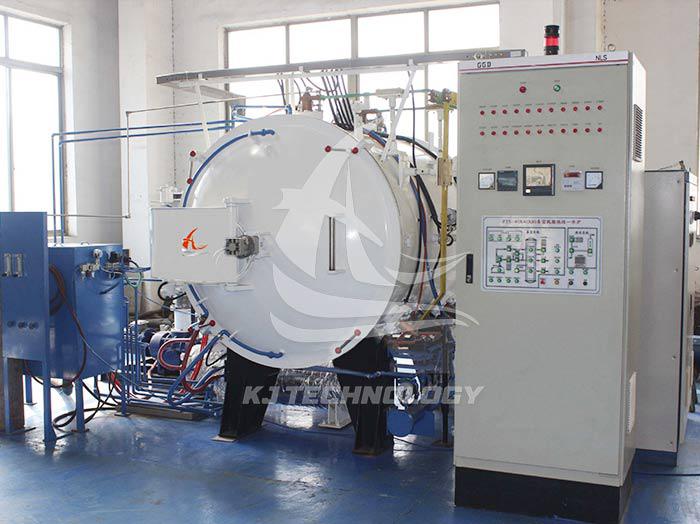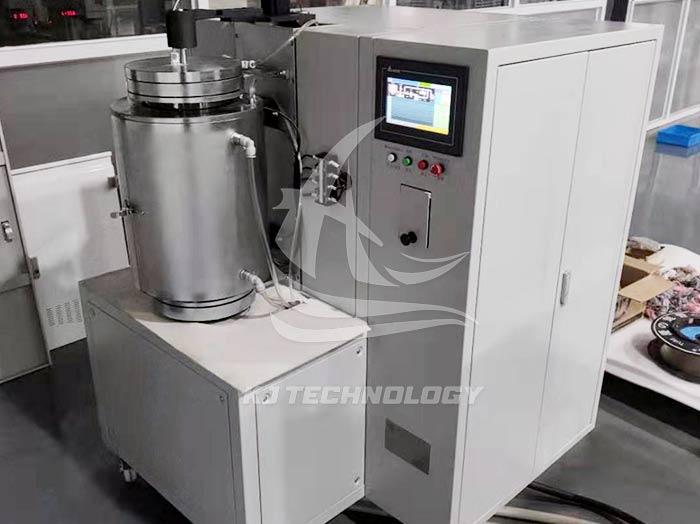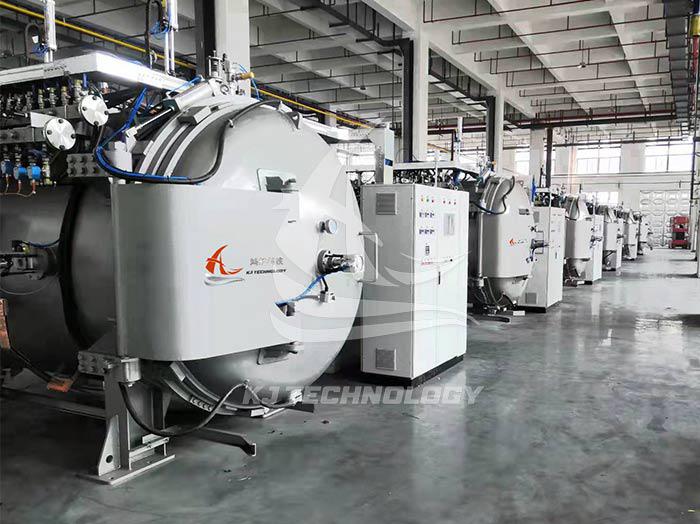Application of Aluminum Brazing Vacuum Furnace in Metal Manufacturing Industry
 07-03-2025 Author: KJ technology
07-03-2025 Author: KJ technology
Aluminum brazing vacuum furnace is widely and crucially used in the metal manufacturing industry. Through precise control in a vacuum environment, it significantly improves the quality and efficiency of metal connections. Specific application scenarios and advantages are as follows:
1.Core application scenarios
aerospace field
High precision component connection: used for brazing engine guide vanes, turbine guide vanes, combustion chamber fuel nozzles, and other components. These components are mostly made of titanium alloys and high-temperature alloys. Traditional welding is prone to cracking, while vacuum brazing avoids thermal stress by connecting at low temperatures (about 600 ℃), while eliminating oxide films in a vacuum environment to ensure joint strength and sealing.
Manufacturing of complex structures, such as honeycomb sealing structures and fuel manifolds, requires precise filling of small gaps (0.05-0.2mm) in a vacuum environment to ensure airtightness comparable to precision instruments.
Automotive manufacturing field
Batch production of heat exchangers: Aluminum radiators such as automotive air conditioning evaporators, condensers, and intercoolers are vacuum brazed, and continuous production is achieved through nitrogen protection atmosphere and non corrosive brazing agents, increasing efficiency by more than 50%, and the joint strength is higher than traditional processes.
Key component connections: brazing of engine oil pan, transmission valve body and other components, utilizing vacuum environment to reduce deformation and improve product qualification rate.
Electronic and electrical field
Welding of micro components: brazing of microelectronic devices such as integrated circuits and sensors, avoiding poor contact caused by oxidation in a vacuum environment, and improving product reliability.
High frequency device manufacturing: such as satellite communication waveguide devices, vacuum brazing eliminates weld impurities, reduces signal loss to below 0.1dB/m, and meets high-precision communication requirements.
In the field of new energy
Solar panel: Vacuum brazing is used to connect copper conduction band and silicon wafer, reducing contact resistance and improving power generation efficiency.
Wind turbines: brazing of components such as gearboxes and generator rotors to improve fatigue strength and extend service life in a vacuum environment.
2. Technological advantages support application
Non oxidizing environment, improving quality
The vacuum degree can reach 0.0001Pa, completely eliminating metal oxidation, avoiding defects such as porosity and cracks in welds, and increasing joint strength by more than 30%. For example, after vacuum brazing, the high-temperature resistance of aircraft engine turbine blades reaches 1200 ℃, and the service life is extended to twice that of the original process.
Low temperature connection reduces deformation
The brazing temperature is lower than the melting point of the base material (such as about 600 ℃ for aluminum alloy) to avoid material deformation caused by high temperature, especially suitable for the manufacturing of thin-walled and complex structural components (such as satellite antennas).
Ability to connect dissimilar materials
It can achieve brazing of dissimilar materials such as titanium alloy and stainless steel, ceramics and metals, meeting the dual requirements of lightweight and high-performance in the aerospace industry. For example, the titanium alloy shell and ceramic sealing ring of a satellite fuel tank are fused at the atomic level through vacuum brazing to ensure sealing reliability.
High precision and consistency
Through zone heating and intelligent temperature control system (temperature uniformity within ± 3 ℃), the vacuum brazing furnace can achieve synchronous processing of multiple parts and joints, ensuring consistent quality in mass production. For example, the brazing of honeycomb sealed structures in aircraft engines can fill hundreds of micropores in one furnace installation.
Cost and efficiency optimization
Save flux: Vacuum environment does not require flux, reducing material costs and simplifying cleaning processes.
Extend fixture lifespan: Fixtures corrode less in vacuum environments, reducing maintenance frequency by over 50%.
Suitable for mass production: The continuous vacuum brazing furnace can achieve 24-hour uninterrupted production, with a daily production capacity of thousands of pieces per line.
3. Verification value of typical cases
Manufacturing of Aircraft Engine Components
After vacuum brazing, the joint strength of the high-pressure turbine guide vanes of a certain model of engine increased by 30%, and the high temperature resistance performance reached the design requirement of 1200 ℃. The service life was extended to twice that of the original process.
Car radiator upgrade
After a certain automobile manufacturer switched to vacuum brazing, the air conditioning evaporator leakage rate decreased from 5% to 0.1%, the product qualification rate increased to 99.5%, and the annual cost savings for repairs exceeded 10 million yuan.
Optimization of satellite waveguide components
After a certain satellite communication system switched to vacuum brazed aluminum waveguides, the signal loss was reduced to below 0.1dB/m, an increase of 40% compared to traditional processes, meeting the requirements of high-precision communication.








